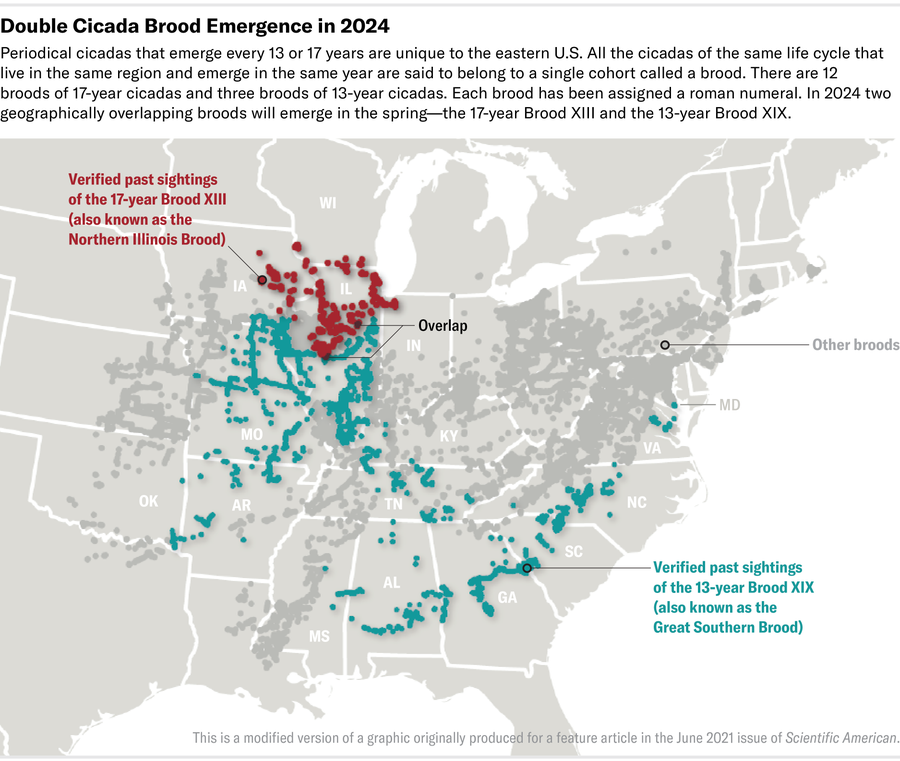Late spring and early summer in the forests of the eastern half of the U.S. have been eerily quiet for the past two years. In most years, long-lived periodical cicadas thrum through the region, but a quirk of timing means these insects have been sparse since 2021. This year, though, they’re roaring back.
That’s because 2024 will see two separate batches of periodical cicadas emerge en masse, spread across much of the eastern half of the U.S. These insects crawl out of the ground once every 13 or 17 years for a rush of mating and egg-laying until all the adults die, and the next generation is tucked underground until their own teenage years. It’s an unusual but ancient lifecycle that has become part of the fabric of Eastern U.S. forests. And it will be on full display this spring, with both a 13-year brood and a 17-year brood emerging across adjoining territories—a particularly rare occurrence.
“They don’t often coincide in time, but to have them coincide in time and space is even more unusual,” says John Lill, an insect ecologist at George Washington University. “That’s what’s happening this year that’s generating a lot of buzz—pun intended.”
On supporting science journalism
If you’re enjoying this article, consider supporting our award-winning journalism by subscribing. By purchasing a subscription you are helping to ensure the future of impactful stories about the discoveries and ideas shaping our world today.
Credit: Daniel P. Huffman and John Cooley, modified by Jen Christiansen
Most of the periodical cicadas the U.S. will see this year belong to the Great Southern Brood, aka Brood XIX, a 13-year cohort that stretches across Missouri, Arkansas, southern Illinois, Tennessee, Alabama, Georgia, the Carolinas and surrounding states. The 17-year cicadas due this season belong to Brood XIII, or the Northern Illinois Brood.
These groups of cicadas hatched in 2011 and 2007, respectively, from eggs laid in tree branches. The newborn cicadas fell…
Read the full article here







